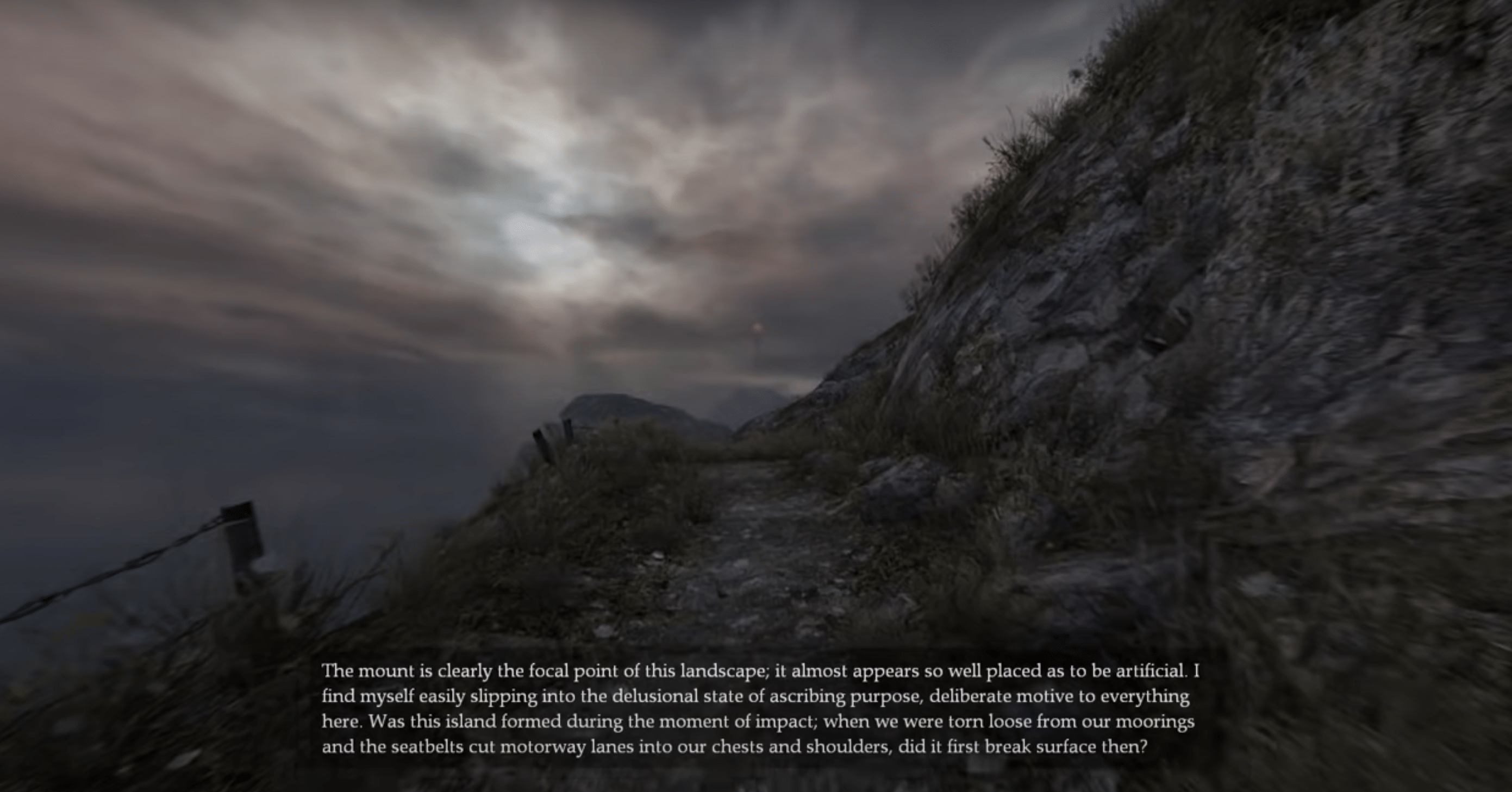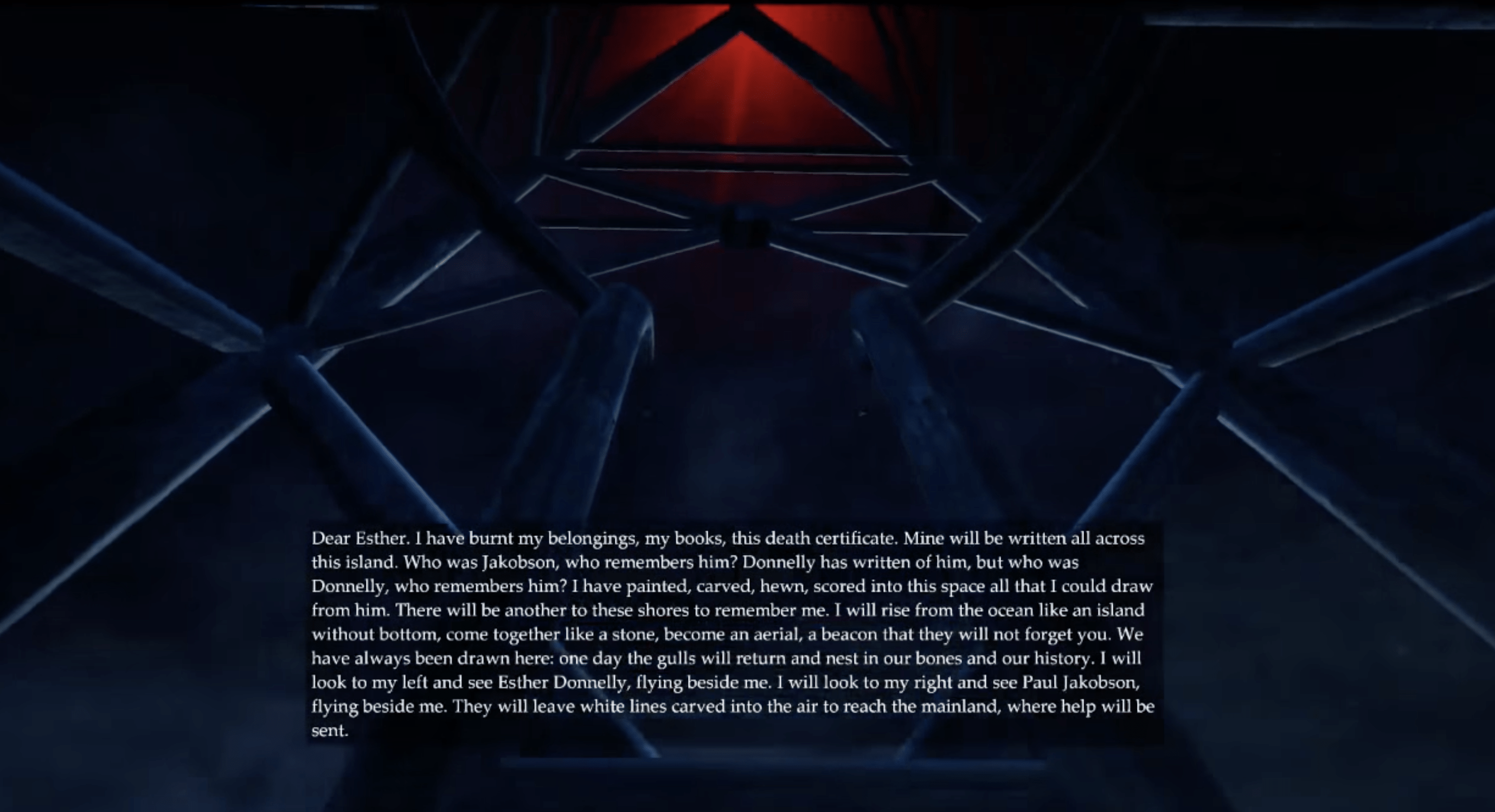I played Dear Esther on my iPad. The game was developed by the British video game company The Chinese Room in 2007. In the game, you start off on an abandoned shore with a lighthouse, cliffs, and old buildings. It is some shore off of a British coast. Given some of the game’s themes, I would say it is intended for an audience of 16+.

As you explore more of the world, narrative elements are unlocked. An anonymous man’s voice reads bits and pieces of text intended for a “Dear Esther”. As you explore different parts of the islands, you learn more details about the man, Esther— who is presumably his wife— and a series of other characters who inhibited the island. Even though more is revealed as you explore, the messages can be overly lavish, poetic, cryptic, and quite frankly difficult to understand or piece together. One understands fragments such as Esther being killed by a drunk driver, or several very sick people inhabiting the island. This ambiguity has its tradeoffs; it adds a mysterious air to the game and allows it to be open to interpretation upon multiple gameplays. However, without a clear direction, it can feel aimless and overly mysterious.
I suppose this tradeoff relates to the type of fun they are striving for, that is, fun from discovery— discovery from exploring the intricate world that is created. There is extreme attention to detail such as the rustling of the grass, the movement of the clouds, the etches on the rocks. This creates an evocative space that is incredibly immersive.
One can also derive fun and joy from the challenge of trying to figure out the narrative, the narrative itself, and the sensation that comes from listening to the music and the kinesthetic experience of walking through the world. As their primary goal seemed to be fun from discovery as it was a walking sim, they achieved that with flying colors. However, I found the narrative elements to be a bit too ambiguous and a potential source of confusion for players. To improve upon this, I’d likely make the narrative slightly more cohesive and understandable as to obtain a bit more fun from that category.
As you continue to explore, a diversity of locations are unlocked. One location I enjoyed was the cave, in which you dive underground and discover what looks to be a city completely submerged underwater. This adds novelty and feeds into the fun from exploration. The color palette shifts from dull grays to vibrant blues and glowing silvers, keeping one curious for more.  One objective of the game is reach the lighthouse, the light of which is constantly glowing. Even though you are exploring other aspects of the world, it is understood that that is a sort of end. Once you finally reach it, the outcome is a bit surprising— you jump off the tower and commit what appears to be suicide, just like the narrator.
One objective of the game is reach the lighthouse, the light of which is constantly glowing. Even though you are exploring other aspects of the world, it is understood that that is a sort of end. Once you finally reach it, the outcome is a bit surprising— you jump off the tower and commit what appears to be suicide, just like the narrator.


